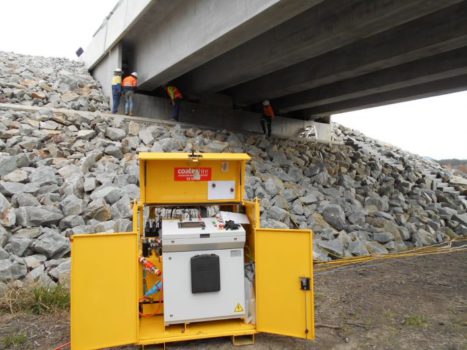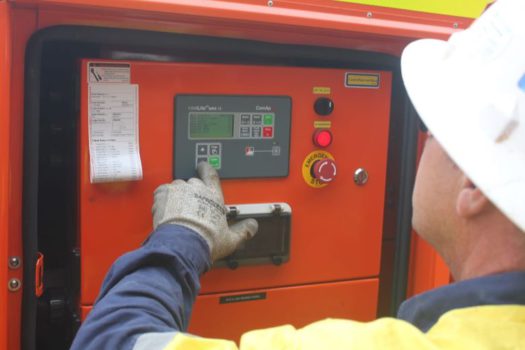Lifting heavy loads requires precision – because getting it wrong with a bridge or a building can be an expensive, time-consuming exercise. For the ultimate peace of mind when it comes to heavy-duty lifting, a synchronous jacking system is the best solution.
Coates, Australia’s leading equipment hire and solutions provider, can design, install and certify a synchronous hydraulic jacking system for heavy lifting applications across a range of industries including civil works and construction.
“For cost efficiency, ease of project delivery and ultimately for peace of mind, many of our customers now see great value in partnering with just one trusted provider for all aspects of their heavy lifting,” says Joseph Hovanjec, National Projects Engineer at Coates.

“Our total solution approach gives customers access to a range of high-quality synchronous jacking systems; hydraulic cylinders, jacks and structural props to suit most lifting applications; and Australia’s largest range of ancillary equipment within the lift and shift market.”
Sync systems explained
By electronically controlling multiple hydraulic jacking points, sync systems allow operators to synchronise the lifting or lowering of large and heavy structures in small increments with millimetre accuracy.
Sync systems utilise pressure sensors on each jacking point to create load information, which is then electronically fed back to a central control point. Here this data is interpreted, triggering directional control valves to automatically open and close to synchronise load movement, keep loads level and ensure pre-determined parameters can be achieved.
Sync system benefits
Aside from simultaneously being able to lift from multiple points, synch systems also allow for perfect heavy load control during lifting and lowering, and can achieve a high degree of accuracy for load displacement and jacking force.
Other benefits include:
- Scalable: Modular jacking sync systems are scalable, with the number of lifting points increased to accommodate larger structures and larger continuous spans;
- Weight distribution: These systems can determine the centre of gravity and detect unevenly distributed loads, automatically adjusting cylinders as required. Sync systems can also weigh objects to prevent over/under loading;
- Safety: Operation from a single control point means fewer personnel are required to monitor loads, a design feature that also separates people from hazards during lifting. Warning alarms and emergency stop features further help to keep people safe;
- Quick set-up and lifting times reduce downtime and improve cost efficiency;
- By automatically recording and storing jacking data (via USB drive), sync systems provide additional quality assurance;
- For ease of transportation, sync systems like Coates’s EVO Synchronous Lifting System are fully enclosed and feature fork pockets and crane points.

The Coates difference
Coates Engineering Solutions, the company’s in-house engineering team specialising in temporary works, can design and certify a heavy lifting solution, while their highly experienced installation team can be available on-site anytime, anywhere in Australia.
“When customers need support with system design, certifying prescribed jacking procedures, equipment supply, installation or project management, they turn to Coates knowing that we have the range, the approach, the manpower and the expertise to help them find the right solution,” says Joseph.
Coates is currently supporting Transport for NSW in delivering a collection of bridge maintenance projects across the state using synchronous jacking systems. To date, Coates has provided intricate lifting equipment and services during the replacement of bridge bearings at six locations.
Meanwhile in Newcastle, Coates has supported a highly specialised project with Richard Crookes Constructions (RCC). The firm engaged Coates to design and install propping, together with a synchronous hydraulic jacking system, to lower three floors in a heritage building.
For the complex and high-risk job, Coates adopted a multi-strategy approach to get the job done. Instead of disassembling and rebuilding the floors, RCC found that using the hydraulic method with Coates was about 45% cheaper and 50% faster. With the temporary works now finished, the project is on track for completion later this year.
Enquire now or call Coates Engineering Solutions on (02) 8796 5000.
Comment below to have your say on this story.
If you have a news story or tip-off, get in touch at editorial@governmentnews.com.au.
Sign up to the Government News newsletter






Michael Andjelkovic on: Council takes on NSW government in court
jdvukovic@bigpond.com on: Council takes on NSW government in court
Tyrone Peter Fernandes on: NSW announces biosecurity appointments